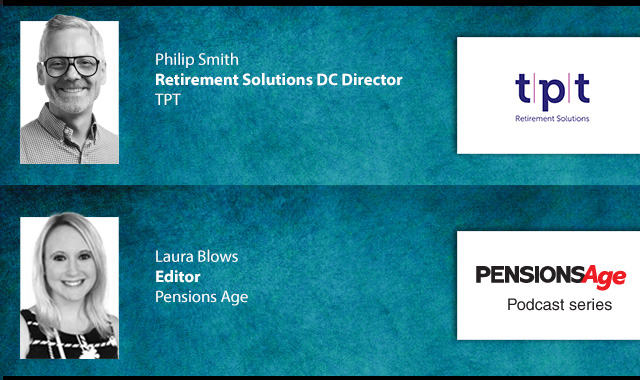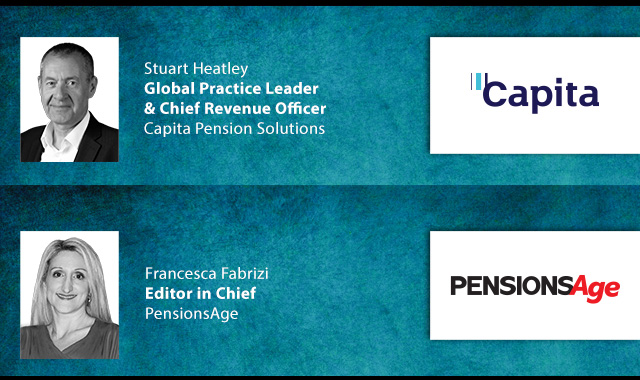Laura Blows talks to Mark Rowlands, director of customer engagement at NEST, about how to increase member engagement
Member engagement is one of those terms that could mean different things to different people. So, for NEST, how do you define member engagement?
Engagement will mean different things to different people. Before we think about what it means for NEST, I think as an industry we need to start thinking about what the outcome of engagement is first, rather than engagement itself. So if you define the outcome, as in what behavioural change you are trying to achieve, that in turn can then inform how you want to achieve it and how you measure it.
If you go back a few years, engagement was framed as ‘let’s communicate through educational seminars with members’. Success was then measured by website hits or how many people were making active choices. It was all predicated on that belief that engagement led to active decision making.
Then more recently we’ve seen the arrival of auto-enrolment and scheme design, which not only thinks about automation for people joining, but also about automatic contribution increases, along with more innovation coming into default, lifestyle-type investments. So all of a sudden, the member doesn’t have to make those decisions. Engagement can now be measured through different tactics. This is about how you combine education and automation. What best practice is looking like now, globally, is instead of that being perceived as a binary choice – that you either engage members through education or let the scheme do it through design – the two work very closely together.
From a NEST perspective, what we are trying to do is merge the best aspects of behavioural understanding, automation and auto-enrolment, with the best aspects of engagement, so members get the very best outcome they can.
You mentioned that automation means members do not have to be quite as actively engaged as was previously necessary. Does that mean the sole responsibility for engaging the members and determining the outcomes lies only with the employers and trustees now?
No, it’s collaboration. The government sets the macro environment, in terms of the tax policies and regulatory policies to reward saving behaviour. However, the balance of responsibility, I would argue, falls on the trustee or the employer, but there is also a responsibility for the employee. But we know there are limits from the employee in terms of financial understanding.
But let’s remember, if you put the scheme design in place, where you have auto-enrolment, auto-escalation of contribution, the very best investment ideas in the default fund, which is how NEST approaches it, some of those classic decisions have been taken care of. So then your engagement focus can be much more narrowly focused on the employee’s understanding of what they have, so they then can tick the mental box that says their pension is covered.
If we go back a generation, how many DB members were actively engaged in understanding the DB environment? Hardly any. So if we take the best aspects of DB [in terms of removing some decisions from the member], then the conversation can be about making schemes the best quality they can. We need the regulation to be empowering those schemes to deliver good outcomes for members. And that’s why at NEST, we are calling for things like default pathways on retirement options as an example.
You said that previous generations weren’t particularly engaged with pension saving. But we all know that the earlier somebody starts saving for retirement, the greater the impact on the eventual size of their pension pot. So how can we encourage younger people to start engaging and saving for their retirement?
The challenge is young people have lots of pressures on them. If they come out of university they have a debt of £40,000 on average. If they have moved to a city centre, probably half of their take-home pay goes to rent. So getting them to think about pensions, which is something their parents haven’t even encountered yet, is a real challenge. Which is why we welcome some of the enhancements in the recently-announced automatic enrolment review about allowing people to join from 18.
The other thing we are doing at NEST is a piece of research with Harvard University around trying to think about how the pensions industry works with more liquid savings as a combined package. Because if we can get people into the savings habit, then, as an example, when their student loan has expired, they can move onto pensions saving. By running savings alongside pensions, we are starting to see some really interesting behavioural results and getting people to buy into savings at a younger age. We are in the stage of doing field trials with some larger employers who are testing this out and we will be publishing the results in due course.
How can those managing pension schemes help all the members they have? Is it a case of using member segmentation or personalisation, or do you have any other tips?
Segmentation can be really useful, as you can identify some broad buckets of colleagues within a scheme and you can tailor the messages to them. But we all know that one 50 year old, for example, is very different to another 50 year old. They can have different life events going in the background, and you as a scheme may only know so many things about them. So we have to use segmentation as a blunt instrument and then think about personalisation. If you can personalise the content, personalise the timing to coincide with a life event, and you personalise the call to action, that’s how you can motivate all generations to do something differently.
A good example is a personalised video statement. Instead of producing a paper-based benefit statement, you produce it in a digital video format, personalised to the member, both with the content and in terms of the call to action. And because it’s digital you can serve it at the time that makes the most sense to that employee so that they can be motivated to click on their smartphone to take the action, all within one statement. This closes the gap between awareness and action.
I imagine that increasing the call to action – not just raising awareness – is going to be of greater importance over the next couple of years, with auto-enrolment contribution rates rising and the potential risk of rising opt-out rates. How can we support members during this time?
It’s no surprise that the contribution rises are choreographed to take place in April, when tax rates and the personal allowance changes, so that the impact on the take-home pay packet of the employee is negligible, depending on individual circumstances.
If you are an employer, you have to choose whether you want to be proactive and do something in advance, or reactive and respond to employees opting out. Irrespective of which route you choose, the key is about promoting the benefits. So the benefits can be promoted in current currencies. What I mean is saying, for example, for every £1 you as an individual put in, the employer is also putting in, plus tax relief, so you get £4 invested. Then if you project that forward with investment growth at the point of retirement, you can talk about thousands of pounds differential. So we need to be very benefit-orientated in terms of how we communicate.
Looking beyond the next couple of years, how may the way we help members engage with their retirement savings change? For instance, will it be through the changing way we use technology?
At NEST right now, we are currently testing a number of techniques where we step back and see what is happening in the world of fintech and the world of consumer marketing.
We know the way pension schemes will communicate in the very near future will be fundamentally different. It will be much more about personalisation. It’s unbelievable to think that we won’t be personalising communication to members within a couple of years, because that’s the pace of which technology goes.
Now the challenge is, if you are a trustee or employer, you only know a little bit about the member’s life. How do you use that data to then communicate? You can reinforce that data with other data feeds, within the confines of GDPR, so you can build a picture of someone’s life.
Employers increasingly will think about pensions as part of their reward package and will align pensions with their broader benefits. So the focus of communications will change. It will no longer be about things like joining a scheme, it will be about financial wellness, about the heuristics of getting people to feel engaged, getting people to feel savvy with their money. Also getting people to think about their pensions pot as a personalised asset.
The reason why this is important is because it is one of the trends that underpin transfers. People don’t like the fact that they do not ‘own’ their pension. If we can build that sense of ownership it can stop irrational behaviours about transferring out of the pension and putting the money into an ISA, which could have exactly the same asset classes, but having gone from an institutional price to a retail price. So we have to think about the trust and brand of pensions.







